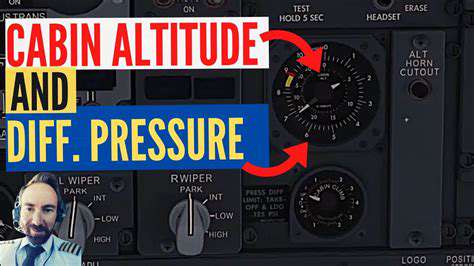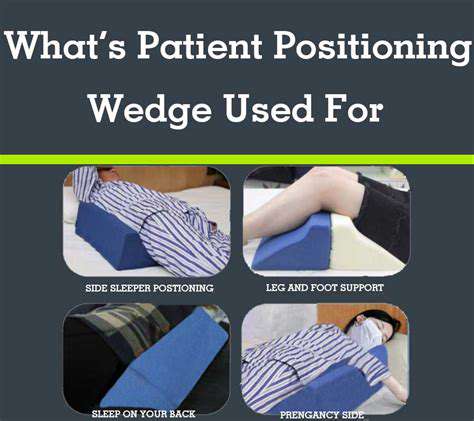
Understanding Cabin Pressure
Maintaining proper cabin pressure isn't just about comfort - it's a matter of safety. Aircraft cabins maintain controlled pressure levels that simulate conditions at about 6,000-8,000 feet, even when cruising at 35,000 feet. This careful balancing act prevents the potentially dangerous effects of rapid decompression.
Your ears popping during takeoff and landing? That's your body reacting to these carefully calculated pressure changes. Flight crews monitor these adjustments constantly to ensure passenger safety throughout the journey.
The Impact of Altitude Changes
As planes ascend, the outside air pressure drops dramatically. The cabin pressurization system compensates by slowly reducing interior pressure to match a comfortable altitude equivalent. During descent, the reverse process occurs, gradually increasing cabin pressure as the aircraft approaches its destination.
Pilots carefully manage these transitions - too rapid a change could cause significant discomfort or even medical issues for passengers. The typical rate of pressure change equals about 300-500 feet per minute, allowing most people's bodies to adjust naturally.
Physiological Responses to Pressure Changes
Human bodies contain numerous air-filled spaces that react to pressure variations. The middle ear, sinuses, and even digestive system can all be affected. While most people adapt easily, those with colds or sinus issues may experience more pronounced effects.
Chewing gum or swallowing frequently helps equalize ear pressure during takeoff and landing. For infants, feeding or using a pacifier serves the same purpose by promoting swallowing motions.
Cabin Pressure Control Systems
Modern aircraft use sophisticated environmental control systems that automatically adjust cabin pressure. These systems monitor multiple parameters including altitude, rate of climb/descent, and passenger load to maintain optimal conditions.
Redundant systems and backup oxygen supplies provide multiple layers of safety. Regular maintenance checks ensure these critical systems function properly before every flight.
Safety Procedures During Pressure Changes
Airlines train crews extensively on managing pressure-related situations. Standard procedures include demonstrating oxygen mask usage and explaining cabin altitude warnings. Flight attendants remain particularly vigilant during critical phases of flight when pressure changes occur.
Following crew instructions during these periods isn't just about comfort - it's a vital safety measure. Even simple actions like keeping seatbelts fastened can prevent injuries if unexpected turbulence occurs during pressure adjustments.
Decompression and Emergency Procedures
While extremely rare, rapid decompression events trigger immediate crew response. Oxygen masks deploy automatically, and pilots initiate emergency descent procedures to reach breathable air altitudes quickly.
Passengers should always pay attention to pre-flight safety briefings - knowing how to use oxygen masks could prove lifesaving. Crews train extensively for these scenarios through regular simulator sessions.
Passenger Awareness and Preparation
Understanding basic pressure concepts can make flying more comfortable. Those prone to ear discomfort might consider specialized earplugs or decongestants (after consulting a physician). Staying hydrated helps the body adapt to pressure changes more effectively.
Simple preparation can transform a potentially uncomfortable flight into a pleasant journey. Knowing what to expect removes much of the anxiety surrounding air travel.
Managing Stress and Anxiety: A Mindfulness Approach
Mindfulness Techniques for Flight Anxiety
Flight anxiety affects many travelers, but practical techniques can help. Focus on your breathing - inhale deeply for four counts, hold for four, then exhale slowly for six. This simple pattern activates the body's relaxation response. Notice your surroundings without judgment: the texture of the seat, the hum of the engines, the quality of light through the window.
Anxiety often stems from imagined scenarios - grounding yourself in present sensations provides immediate relief. Keep a small object (like a smooth stone) in your pocket to focus on when nervousness arises.
Creating a Calming Pre-Flight Routine
Develop consistent pre-flight habits that signal safety to your nervous system. Arrive early to avoid rush-induced stress. Walk through the terminal to release nervous energy. Many travelers find listening to familiar music or podcasts creates a comforting bubble amidst airport chaos.
Pack a comfort kit with noise-canceling headphones, a soft scarf, and favorite snacks. These familiar items create continuity between your normal environment and the aircraft cabin.
Dietary Considerations: Fueling Your Flight Safely

Understanding Macronutrient Needs
Balanced nutrition plays a crucial role in travel comfort. Complex carbohydrates provide steady energy, while lean proteins help maintain alertness. Avoid heavy, greasy foods that can cause digestive discomfort at altitude. Many frequent flyers pack healthy snacks like nuts or protein bars to maintain energy levels.
Hydration and Electrolyte Balance
Cabin air contains very little moisture, accelerating dehydration. Drink water consistently throughout the flight - aim for at least 8 ounces per hour. Alcohol and caffeine exacerbate dehydration effects, so consume these sparingly if at all. Electrolyte tablets can help maintain proper mineral balance during long flights.
In-Flight Comfort and Positioning: Positioning for Pain Relief

Ergonomic Seat Design
Seat design significantly impacts travel comfort. Look for seats with adjustable lumbar support and headrests. Even small adjustments can prevent stiffness during long flights. Many travelers find placing a rolled-up sweater behind their lower back provides additional support.
Optimal Seat Positioning
Change positions frequently to promote circulation. Perform simple ankle circles and knee lifts every hour. When possible, stand and walk the aisle to prevent blood pooling in the legs. Compression socks can significantly reduce swelling and discomfort on long flights.